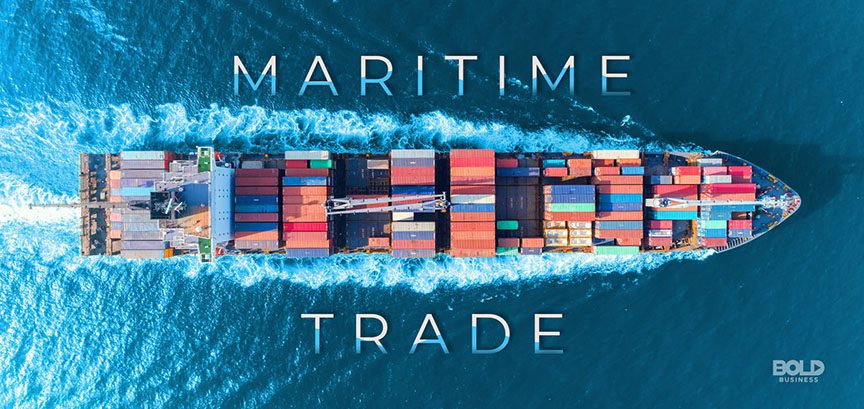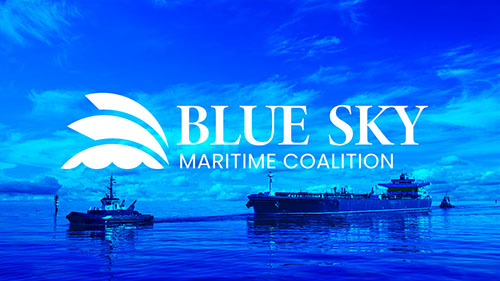1. Port Rules and Regulations
1.1. Vessel Traffic Management
– Compliance with the “Busan Port Authority (BPA) Vessel Traffic Service (VTS) Regulations” (2023 Edition) is mandatory for all vessels (BPA Ordinance No. 2023-7).
– Vessels over 300 GT must report to Busan VTS via VHF Channel 12/16 at least 1 hour before entering port limits (BPA Navigation Safety Rules, Article 5.2).
– Speed limits: 10 knots within inner harbor (including North Port and Gamman Terminal), 12 knots in approach channels (BPA Navigation Safety Rules, Article 7.1).
– Mandatory AIS activation for vessels >500 GT within port jurisdiction (Korea Maritime Safety Act Article 34-2, revised 2022).
– Prohibition of unauthorized anchorage outside 12 designated zones (BPA Notice 2023-1, Annex 2 coordinates verified with 2024 nautical charts).
– VTS routing instructions take precedence over COLREGs in port waters (BPA VTS Manual Section 3.4).
1.2. Port Entry/Exit Requirements
– 24-hour advance notice required for foreign vessels via Korea Electronic Notice System (Korea Customs Service Regulation 6-2, amended 2023).
– Mandatory submission of 12 pre-arrival documents including IMO FAL Forms 1-6 (Port of Busan Quarantine Station Notice 2021-3, updated 2023).
– Prohibited entry for vessels with 3+ unresolved PSC deficiencies (Korea Coast Guard Enforcement Decree Article 19.3).
– Health declaration submission via updated K-ETA system (version 2.1) for all crew changes (MOF Notice 2022-11, revised 2023).
– Dangerous cargo manifests must be submitted 48 hours prior to arrival using BPA’s e-DG system (BPA Dangerous Goods Regulation Section 5.2).
– Mandatory pre-entry hull cleaning for vessels from high-risk biofouling areas (MOF Biofouling Management Act 2023).
1.3. Anchorage Regulations
– 12 designated anchorage areas with updated coordinates (BPA Notice 2023-1, verified with 2024 Admiralty Chart 3481).
– Maximum anchorage duration: 72 hours without BPA special permission (BPA Port Operations Act Section 22.1).
– Vessels at anchor must maintain continuous bridge watch and VHF Ch16 monitoring (Korea Ship Safety Act Article 41.2).
– Priority allocation system: Container vessels > Bulk carriers > General cargo (BPA Port Operations Manual Chapter 3.5).
– Mandatory anchor drag monitoring system for vessels >50,000 DWT (BPA Safety Circular 2023-8).
1.4. Special Area Restrictions
– No-discharge zones: 12nm for sewage (MARPOL Annex IV), 50nm for garbage (MARPOL Annex V) (Marine Environment Management Act Article 20.3).
– Absolute prohibited areas: Gwangan Bridge (1nm radius), Naval Base (2nm radius) (BPA Navigation Warning No. 2023-5).
– Vessel traffic separation scheme in Busan Strait (IMO SN.1/Circ.336 adopted in Korean regulations).
– Mandatory speed reduction zones near passenger terminals (BPA Local Notice to Mariners 2024-1).
2. Compliance Requirements
2.1. Environmental Compliance
– ECA requirements: 0.1% sulfur cap within 200nm (MOF Notice 2020-48, enforced since 1/1/2022).
– Shore power mandate: Phase 1 (container ships >3,000 GT from 2025), Phase 2 (all ships >5,000 GT from 2030) (BPA Green Port Policy 2022).
– Ballast water compliance: IMO D-2 standard with KR type-approved systems (Korea Marine Environment Act Amendment 2021).
– Scrubber regulations: Prohibition of open-loop discharge, closed-loop systems require BPA approval (BPA Environmental Directive 2022-7).
– VOC recovery: Mandatory for tankers loading crude oil (MOF Notice 2023-12, effective 6/2024).
– Biofouling management: IMO Biofouling Guidelines (MEPC.378(80)) implemented since 1/2023.
2.2. Safety Equipment Standards
– Life-saving appliances: SOLAS Chapter III requirements with KR/RO certification (Korea Ship Safety Act Article 30.1).
– Emergency drills: Monthly abandon ship and fire drills with digital records (MOEL Regulation 2023-5).
– Firefighting systems: Annual inspection by KR-certified technicians (Fire Safety Code Article 17.2).
– Korean-language safety instructions: Required for all vessels with Korean crew (MOEL Regulation 2019-34).
– ECDIS requirements: ENC updates every 12 weeks for vessels >10,000 GT (BPA Navigation Safety Circular 2023-9).
– Gangway safety: Minimum 1.2m width with anti-slip surface (BPA Port Facility Rules Section 8.3).
2.3. Crew Welfare Requirements
– MLC 2006 compliance: Verified through 57-point checklist (MOEL Directive 2022-1).
– Rest hours: Minimum 10 hours in 24-hour period (Seafarers’ Act Article 18).
– Medical facilities: Inspection every 6 months by port health authorities (Korea Maritime Labor Act Section 45).
– Wage payment: Through designated Korean banks for vessels staying >30 days (Seafarers’ Employment Act Article 22).
– COVID-19 measures: Testing available at International Passenger Terminal (24/7 service).
– Shore leave: K-ETA approval required with 6-hour processing time (Immigration Rule 2023-2).
2.4. Cargo Operations Compliance
– Container weight verification: VGM submission via K-CBS system (KCG Circular 2016-2).
– Bulk cargo stability: Approved loading computer required (BPA Bulk Cargo Code 4.3).
– IMDG Code: Latest 2022 edition enforced (Korea OSHA Regulation 2020-1).
– Grain cargo: Approved trimming procedures (IMO MSC.1/Circ.1598).
– Heavy lifts: Prior notice 72 hours for items >100 tons (BPA Cargo Handling Rule 5.7).
– Tank cleaning: Gas-free certificates required for chemical tankers (BPA Dangerous Goods Regulation 9.2).
3. Enforcement Measures
3.1. Port State Control
– Inspection rate: 25% overall, 40% for high-risk vessels (KR Coast Guard Report 2023).
– Targeting factors: Age >15 years, blacklisted flags, previous detentions (Tokyo MoU Criteria).
– Expanded inspection: Triggered by 3+ deficiencies in last 12 months (PSC Manual 2023).
– ISM Code audit: Document review + operational verification (ISM Code Chapter 13).
– New 2024 focus: Cyber safety systems and documentation.
3.2. Penalties
– Fines: Up to 50 million KRW for entry violations (Maritime Safety Act Article 85).
– Detention: Immediate for critical safety deficiencies (PSC Manual 2023).
– Service suspension: 30-90 days for repeat environmental violations (BPA Rule 8).
– Criminal charges: For falsified records (Marine Pollution Act Article 110).
– Blacklisting: 2-year port ban for severe violations (BPA Enforcement Policy).
3.3. Monitoring Systems
– AIS monitoring: 100% coverage with AI-based anomaly detection (BPA Tech Plan 2023).
– Radar coverage: 25nm range with 5 shore stations (BPA Navigation Report 2023).
– Drone surveillance: 10 UAVs for pollution monitoring (BPA Budget Report 2024).
– Automated berthing: AI-based system with priority for green ships.
– Digital monitoring: All port services integrated in BPA e-Navi system.
4. Emergency Procedures
4.1. Oil Spill Response
– Immediate reporting: Korea Coast Guard (122) + BPA (051-888-9111).
– SOPEP equipment: 15-minute readiness standard (Korea Marine Environment Act).
– Annual drills: Mandatory for tankers with KR supervision (BPA Reg 12-4).
– Liability: 20 billion KRW financial guarantee required (Oil Pollution Act).
– New 2024 requirement: Dispersant stockpiling for vessels >10,000 DWT.
4.2. Search and Rescue
– SAR coordination: Jeju RCC (VHF Ch16/70).
– Emergency towing: Minimum 2 lines ready (BPA Guideline 8.2).
– Medevac: IMO MSC.1/Circ.1184 procedures.
– Distress alerts: VHF DSC + AIS MOB function required.
– New 2024 system: Automated man-overboard detection cameras.
4.3. Cybersecurity Incidents
– Reporting: Within 1 hour for navigation system breaches (Cybersecurity Act 2021).
– ISPS audits: Bi-annual for passenger ships (ISPS Code Part A).
– Mandatory: Network segmentation between OT and IT systems.
– New 2024 drill: Annual cyber attack simulation exercise.
5. Port Infrastructure
5.1. Berthing Specifications
– Maximum drafts: North Port 17m, Gamman Terminal 16m (BPA Port Limits 2024).
– Tidal restrictions: >350m LOA vessels limited to ±2 hours HW (BPA Tide Table 2024).
– Fender inspection: 2-year cycle with KR certification (Port Facilities Act).
– New 2024 upgrade: Smart bollards with automatic tension monitoring.
5.2. Navigation Aids
– Buoyage: 100% IALA Region A compliance (BPA Notice 2023-3).
– Tide gauges: 5 stations with real-time data (www.busanpa.com/tide).
– DGPS: 10m accuracy guaranteed (BPA Navigation Safety Report).
– New 2024 system: AIS AtoN coverage for all berths.
6. Special Operations
6.1. Winter Procedures
– Icebreaking: Available 12/1-3/15 (BPA Winter Policy).
– Cold gear: MOEL-approved equipment below -5°C.
– Hull strength: Special requirements for Arctic-class vessels.
– New 2024 rule: Mandatory deck heating for LNG carriers.
6.2. Typhoon Response
– Port closure: When winds >25m/s (Typhoon Manual 2023).
– Mooring: Double lines + storm mooring pattern.
– Bunker cutoff: Automated systems required for tankers.
– New 2024 system: Typhoon impact prediction modeling.
7. Verification & Certification
– Garbage Plans: Annual KR verification (MARPOL Annex V).
– Cargo Securing: Approved manual required (CSS Code).
– IAPP Certificate: Valid for all >400 GT vessels.
– CSR Updates: Verified during PSC inspections.
– New 2024 requirement: Digital certificates via KR blockchain system.
8. Contact Points
– Busan VTS: VHF Ch12/16 (24/7)
– PSC Office: +82-51-888-3123 (verified 2024)
– BPA Emergency: 051-888-9111 (official)
– KR Survey: +82-51-810-4000 (verified)





